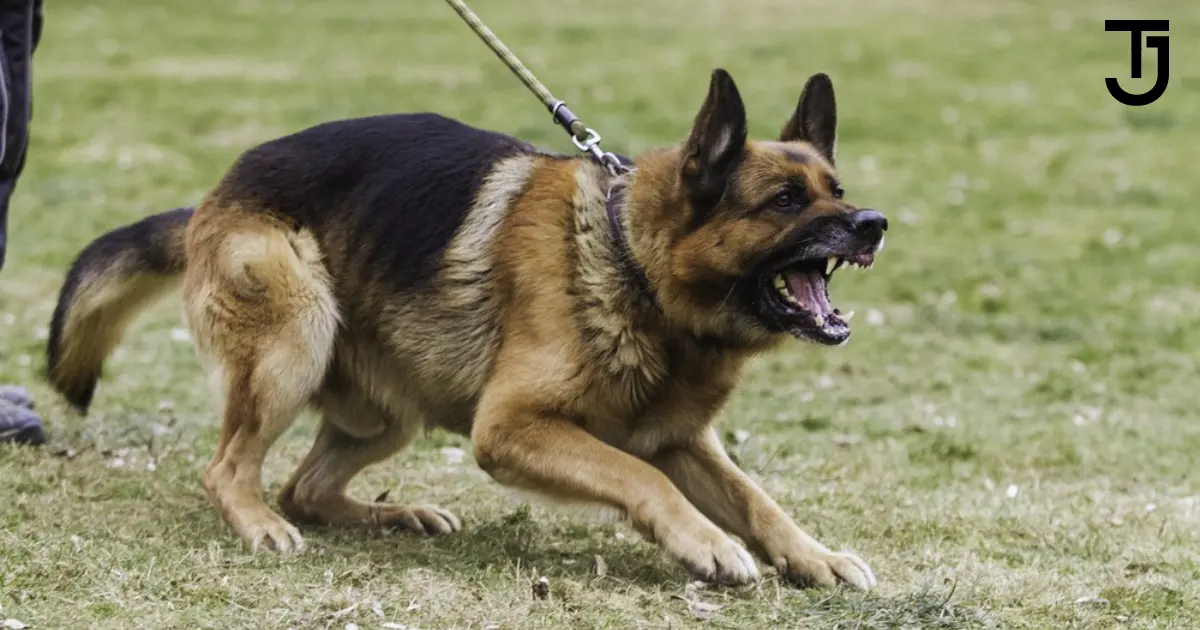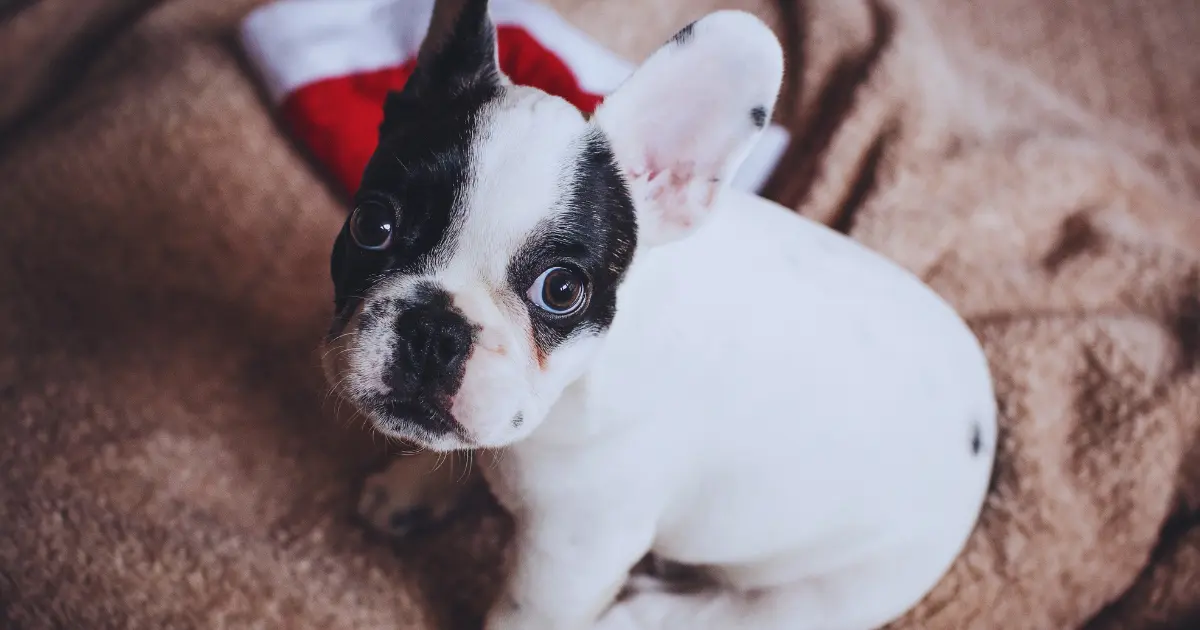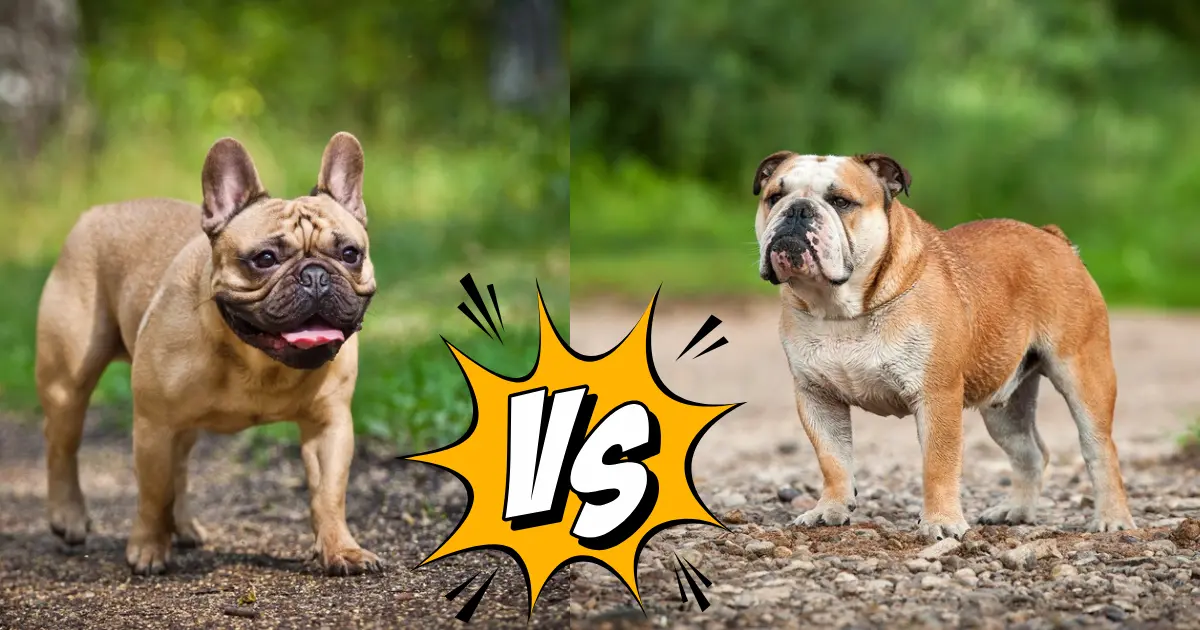Bi-Color German Shepherd: Should You Adopt One?
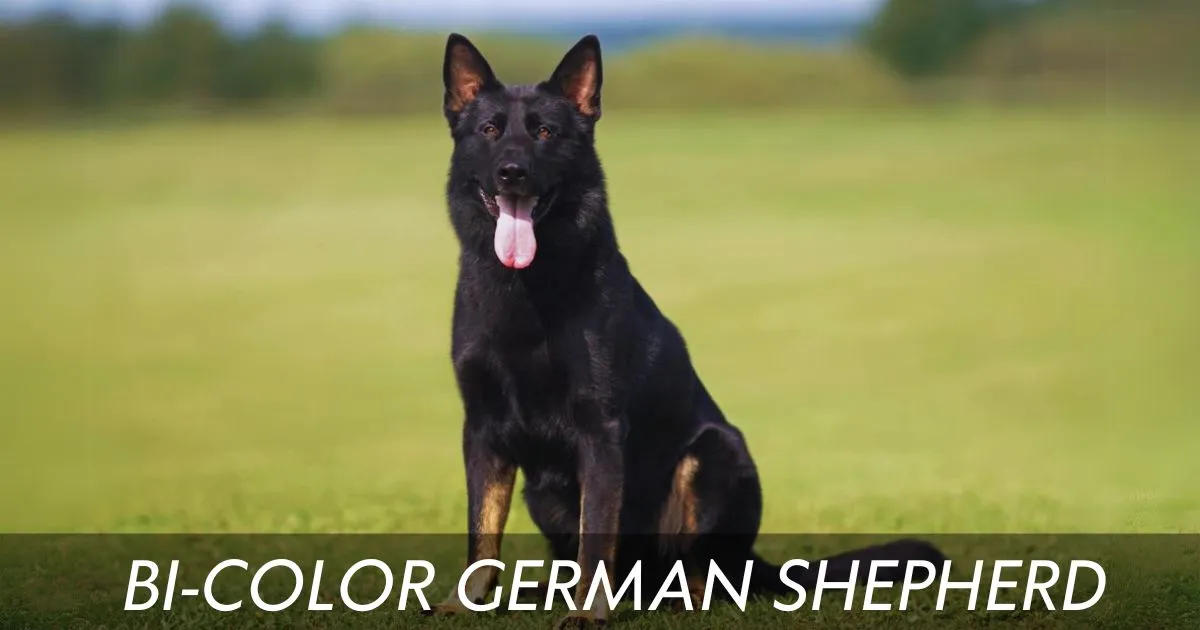
The Bi-Color German Shepherd is one of the most well-known varieties of the German Shepherd breed, recognized for its striking color. This breed of German Shepherd has a beautiful coat, and many dog lovers would like to keep one. Find out about their origin, grooming needs, and other possible coat colors that may interest you.
Bi-Color German Shepherd: What Are They Exactly?
In the complicated world of dog genetics, bi-color German Shepherds represent a separate shade category of the German Shepherd breed as a whole. Naturally defined as a breed expression, these dogs show a unique combination of intelligence, physical ability, and a dual-toned coat. The word “bi-color” can be confusing since most people are familiar with the two-tone German Shepherd. These dogs’ coats are mostly black, covering at least 90% of their total color. As a result, many bi-colored German Shepherds are mistaken for black ones.
Looking below the tails of black puppies is an easy way to identify if a German Shepherd is bi-colored. These puppies can be considered bi-colored if they have a light patch of color.
History of Bi-Color German Shepherd
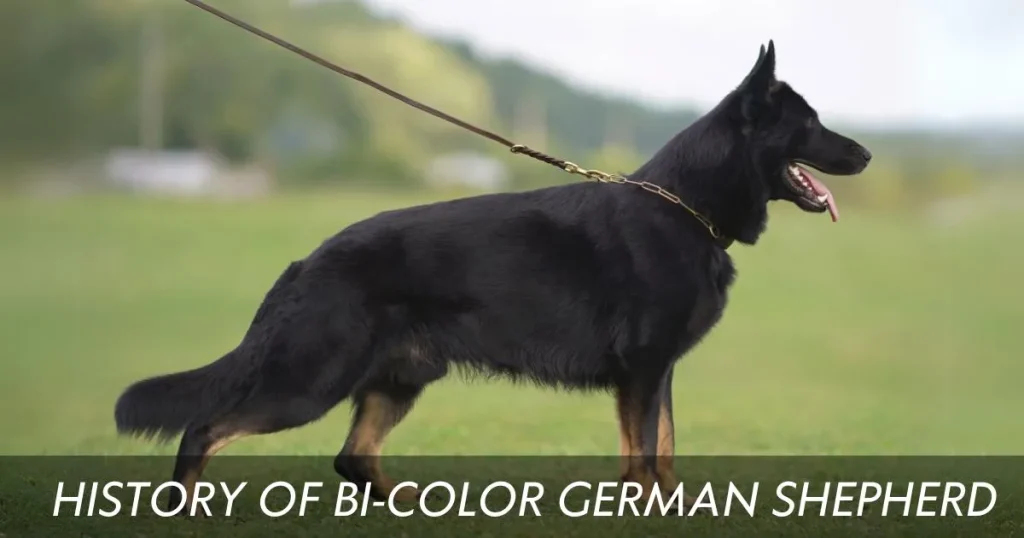
Max von Stephanitz played an important role in establishing the German Shepherd breed’s distinctive characteristics. During his military duty in the German countryside, von Stefanitz fell in love with this incredible dog’s natural beauty and originality, and he founded the German Shepherd breed in the late 19th century.
Von Stefanitz then got a breeding pair and started a systematic breeding process. Especially noteworthy, it was luckily kept from falling down during an era of World War II. German Shepherds keep showing their unwavering loyalty, outstanding intelligence, and amazing athleticism, as well as their unique coat patterns that set them apart from other German Shepherds.
How Can Identify a Bi-color German Shepherd?
Bicolor German Shepherds are a beautiful variation of the German Shepherd breed, with a coat color pattern that is all their own. While this variation of the German Shepherd breed has a primarily black coat, these dogs may appear totally black or brown when you first see them. The black is deep and bright, covering them like a smooth sheet. They have lighter patterns, usually tan or brown, on their paws, legs, and, on rare occasions, the underside of their tail. These markings are limited, allowing the black color to dominate and giving the Bicolor German Shepherd a distinguishing bold and beautiful look.
Bicolor German Shepherds have an average height of 25 inches for males and 22-23 inches for females. Male German Shepherds typically weigh between 70 and 80 pounds as adults, while female German Shepherds weigh between 58 and 63 pounds. They, like other German Shepherds, show a majestic and confident demeanor, enhanced by their striking coat color. The Bicolor German Shepherd’s special appearance, combined with its loyal and protective temperament, make it a very desired breed for both enthusiasts and dog lovers.
Does Coat Length Affect a German Shepherd’s Cost?
When considering the purchase of a German Shepherd (GSD), many potential owners ask whether the dog’s coat length affects its cost. The answer is fairly complicated. Although coat length may slightly affect price, it is not the principal determinant of cost. The price difference between coat lengths is usually more about personal taste and practical needs than a big difference in quality or value.
German Shepherds have two coats, which protect them well from cold weather and allow them to live in a variety of conditions. Those living in colder climates may find the longer coat variation slightly more helpful because it gives extra warmth. It’s interesting to observe that the short-haired German Shepherd is frequently in higher demand, especially for exhibitions, which may result in increased demand and sometimes higher costs for this variation.
Some breeders may charge less for long-haired German Shepherds who do not suit the standard show dog mold. Their quality or skills aren’t affected by this; it’s just a matter of breed standards and preferences. In a nutshell, while there is a minor variance in pricing based on coat length, it is important to recognize that every German Shepherd, regardless of coat length, has the breed’s valued features and capabilities.
Average Cost of A Bi-color German Shepherd?
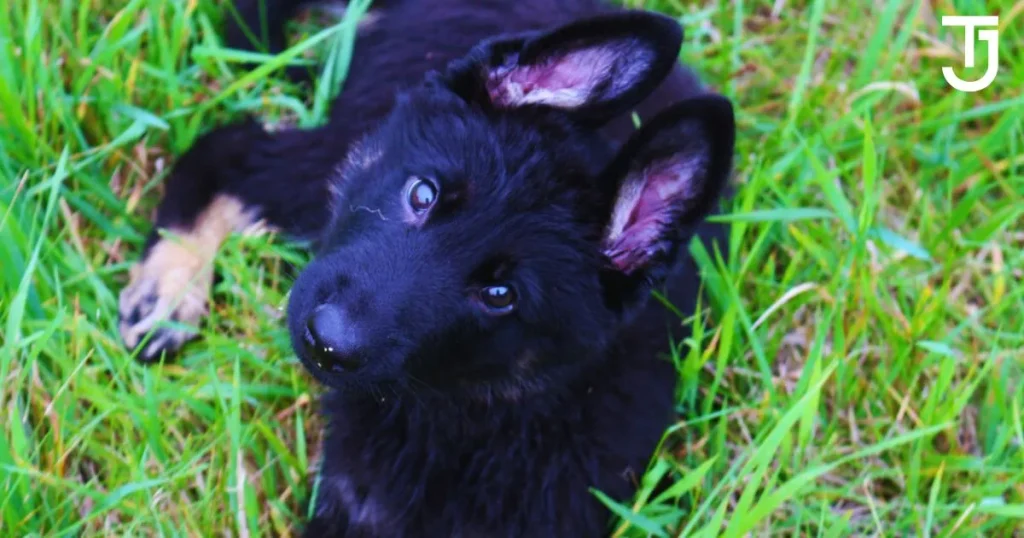
The bi-colore German Shepherd is a popular breed that costs a higher price due to its attractive coat pattern.A variety of factors such as breed, age, training, and breeder reputation can affect the price of a bi-color German Shepherd. You should budget between $1,000 and $2,500 for a bi-color German Shepherd puppy. However, take in mind that coat patterns may be more expensive.
Dog ownership spends regular costs such as food, medical care, grooming, training, and supplies. These expenditures can add up over the course of your pet’s life, so it’s important to budget accordingly.
Variety of German Shepherd Coat Colors
The German Shepherd Dog (GSD) has an impressive range of coat colors, which the American Kennel Club (AKC) divides into standard and non-standard shades.
Standard Coat Colors (AKC Recognized)
Black and Tan: This unique look includes a primarily black body with tan markings around the paws, nose, and occasionally the chest, reflecting the classic GSD image.
Black and Red: The red spots stand out against the black base, making the coat color look bright and rich. They are more powerful than Black and Tan.
Silver and Black: The silver spots, which are usually on the legs and undersides, look beautiful against the black, making the animal look royal and classy.
Black and Cream: A softer variation, in which cream replaces the typical tan, resulting in a more modest yet as lovely coat pattern.
Black: A solid black German Shepherd is beautiful to look at. Their smooth, uniform hair shows that they are strong and classy.
Bi-color: These GSDs are almost totally black, with markings on the legs, face, and sometimes under the tail to highlight their powerful physique.
Sable: Sable GSDs have a lively, wolf-like look that is very different from one dog to the next because they have a mix of dark and light hairs.
Non-Standard Coat Colours (not accepted by the AKC)
Grey: This coat isn’t just any grey; it has a unique silvery tone that looks beautiful in different lights.
Isabella: This rare color has a tan that is a bit washed out and looks almost pastel. It gives the skin a soft, one-of-a-kind look that isn’t often seen.
Blue: Blue GSDs have a mysterious, smoky appearance due to a dilution gene; their coat has a distinct bluish hue.
Blue and Tan: Adding red dilution to the classic tan marks on a GSD creates a stunning new color scheme.
Liver: These dogs’ black fur has been replaced with a rich, warm brown. This gives them a look that is very different from other GSD colors.
Liver and Tan: This color combination is similar to the liver but has tan details. It’s a beautiful contrast that makes me think of black and tan, but with a warmer scheme.
White: Pure white German Shepherds are rare and beautiful, and their snowy coats make them stand out.
Grooming Requirements of A German Shepherd
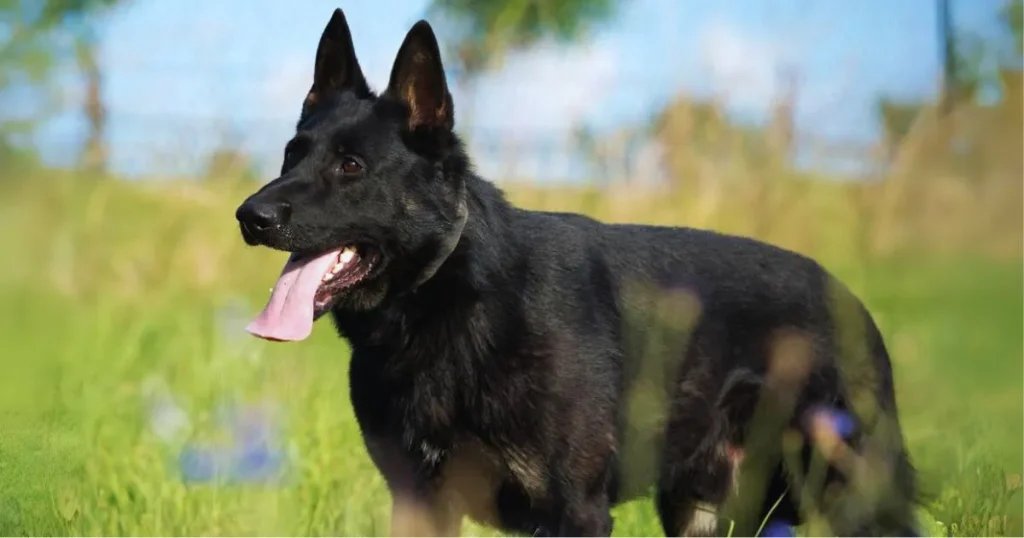
Grooming a German Shepherd is essential for their well-being and requires more than just brushing. While these dogs do not require haircuts, their rich double coat needs regular brushing to control shedding, especially in spring and autumn, when they “blow their coat.” During these peak shedding seasons, owners need to brush their fur frequently to maintain its manageability. Using rakes and de-shedding brushes can really help with this. Aside from brushing, washing your German Shepherd once a month will maintain their coat clean without over-drying their skin. Regular nail trims and weekly ear checks with the right cleaning solutions are also vital for their overall health. This comprehensive grooming routine not only helps to keep your German Shepherd’s physical health, but it improves your bond, making it an enjoyable experience for both of you.
Final Thoughts
With its unique look, flexibility, and loyalty, the bi-color German Shepherd is a one-of-a-kind dog in the world of dogs. These dogs, known for their intelligence, protective instincts, and stunning black and tan coats, are more than simply pets; they are devoted companions and excellent assistants that reflect the finest of the German Shepherd breed. Finding a trustworthy breeder may take some work, but the result is a loyal and intelligent buddy whose distinction and beauty highlight their unique place in the dog breed spectrum.
FAQs:
1. Is the Bicolor Coat a Rare Breed in German Shepherds?
Bicolor German Shepherds is a typically common pattern, but rare colors like black and silver or isabella and tan make some stand out as unique.
2. What Causes Bicolor Coats in German Shepherds?
Bicolor German Shepherds have a unique two-tone coat due to their genetics. They carry the recessive gene for black fur (from melanin overproduction) and normal coloration. The combination of these genes results in their distinct bicolor pattern, demonstrating the complexity of canine genetics.
3. How long can bi-color German Shepherds usually live?
On average, bi-racial German Shepherds typically enjoy a lifespan of 9 to 13 years, with factors such as genetics, health care and environment playing an important role in determining their lifespan.
4. Are Bi-Color German Shepherds Suitable for Families?
Bi-color German Shepherds, known for their loyalty, intelligence, and protective temperament, make perfect family dogs. However, like with other dogs, thorough training and socialization is essential for developing good behavior and affection toward children and other pets.
5. Do kennel clubs officially recognize bicolor German shepherds?
Bi-color German Shepherds receive acknowledgment as a valid coat variation from leading kennel clubs like the AKC. Allowing them to participants in dog shows and competitions.


